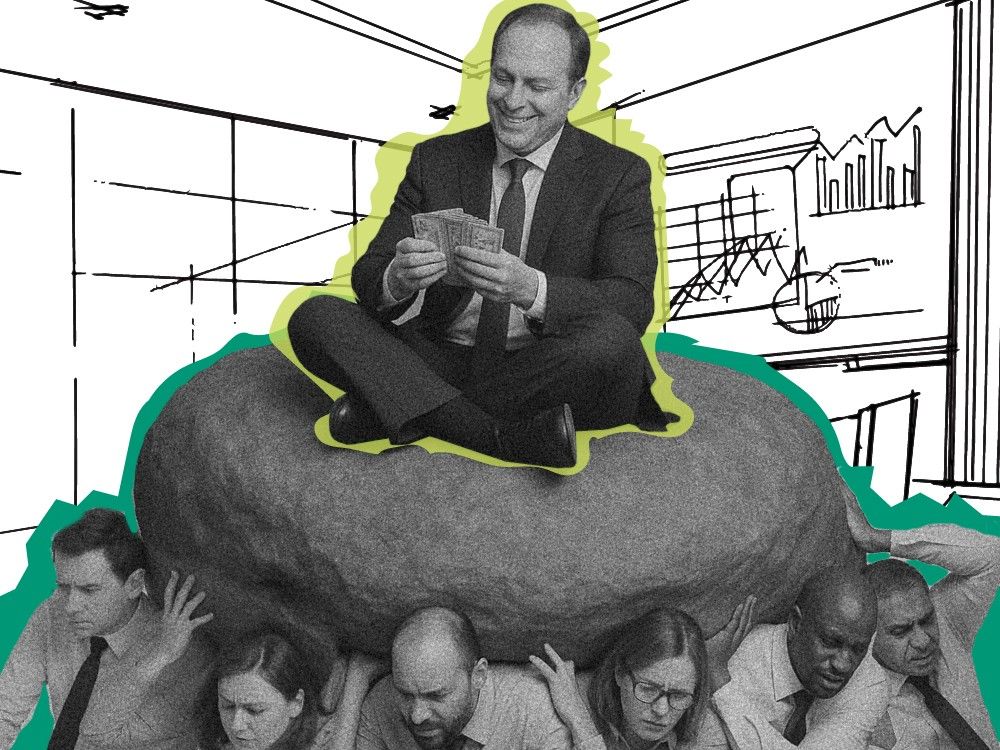Public Service Confidential is a workplace advice column for federal public servants. The following question has been edited for clarity and length.
Dear Public Service Confidential,
I work for the CRA and would like to know why are management and team leaders given monetary bonuses and paid time off at the expense of our hard work?
The employees receive nothing in return. Management pushes the team leaders and the team leaders push the employees to do more. They have a vested interest, that’s for sure.
They claim we must be careful and respectful of taxpayers’ dollars but they pat themselves on the back with taxpayers’ dollars and have no shame doing so with a smile, too. Disgusting behaviour.
It seems the CRA is the type of employer that says do as I say not as I do! Where’s the integrity and transparency they claims is flourishing in the CRA?
Sincerely,
— A fed-up public servant
Few public service administrative issues trigger as much passion as performance pay. Passionate conversations, however, tend to be best when supported by facts. Without trying to persuade anyone about the merits or drawbacks of performance pay, I hope that this at least explains what it is and what it isn’t.
All public service positions are remunerated based on a “total compensation” valuation, the cumulative value of all benefits (such as pension, health and others) plus all cash compensation. Think of it as the formula A + B = C, where A is the value of all benefits, B is total cash compensation and C is your “total compensation.”
Most unionized employees have the clearest path to receiving A, B and C: all their benefits and all their cash payable is delivered during the 12 months of the year. By year’s end, they will have received the full value of their “total compensation.”
This is not true for executives and a small number of unionized managers, including some at the
Canada Revenue Agency
. By design, they receive less than the full cash component during the year.
Executives’ cash remuneration comes in two parts. They’ll receive approximately 89 per cent of it over the course of the year while 11% is held back and calculated on an “at-risk” basis, meaning it’s based on performance.
The logic is that “at-risk” pay leverages better results for the same maximum “total compensation.” The most recently published performance-pay evaluation shows that almost 90 per cent of these employees don’t receive the full “at-risk” amount, meaning that they are retroactively paid less than the position’s established maximum “total compensation” value. What is being given later was held back earlier. Still, though, the term “bonus” is used regularly.
There are true “bonuses,” and the Treasury Board limits them to a maximum of 3 per cent of salary for the EX-1 to 3 level (similar for eligible unionized employees). Two decades of audited reports show that only 10 per cent of performance pay recipients receive “bonuses.” To put 3 per cent into context, it is equivalent to 39 hours of overtime per year — something executives aren’t paid for.
Because paid time has a monetary value, and because some employees prefer having more time versus more money, the CRA’s collective agreements allow specific employee groups to take the performance component of their total compensation either in cash or in time.
Those who wish they had performance pay might want to remember that the first step in that process would be to reduce their take-home pay to create the “at-risk” performance pay pool within their “total compensation” envelope. They wouldn’t likely get all that back. Further, most receiving performance pay also get no overtime pay.
On your point about transparency, I can only offer that I can think of no other compensation process subject to more audit, evaluation and reporting. The numbers of individuals receiving payments, the distribution of ratings and the amounts paid by every department are all publicly reported every year.
Whatever conclusion you reach about performance pay, I hope this background helps to understand the process.
— Daniel Quan-Watson,
Public Service Confidential
Daniel Quan-Watson was a deputy minister and CEO with the federal public service for nearly 15 years. He was also a provincial public servant with the governments of Saskatchewan and British Columbia in the early stages of his career. He is a pilot and rode the Dempster Highway to Inuvik on a motorcycle.

Are you a public servant with questions about your workplace? Write to us anonymously at [email protected] and we’ll pick our favourites to send to an expert columnist. No gripe is too small. No topic is too big.
Public Service Confidential is an advice column, written for the Ottawa Citizen by guest contributors Scott Taymun, Yazmine Laroche, Daniel Quan-Watson, V. C. de la Ronde and Chris Aylward. The information provided in this series is not legal advice and should not be construed as legal advice.
Related
- Do public service managers spend more at the end of the year to secure bonuses?
- Advice for public servants dealing with slackers and no-show coworkers



